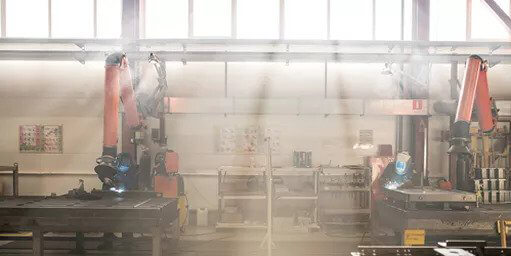Did you know that you can reduce recordable incidents and factory fatigue simply by painting your ceilings and walls white?
The wisdom and evidence of this is over 100 years old and we couldn’t have put it better ourselves. From Safety Engineering, Volume 34, No. 316 (published in 1917):
“An important adjunct to factory illumination is proper interior painting. Ceilings and walls within six feet of the floor should be painted white or whitewashed… In places of dust, fumes, etc., it is necessary to repaint several times a year, but it makes the department much more cheerful.”
Imperfect Light & Diffusion
From Safety Engineering, Volumes 41-42, “Paint as an Accident Reducer” (published in 1924):
“Statistics and our own experience enable us to state positively that in December, when daylight is poorest, over twice as many industrial accidents occur as in June when the days are longest.”
Dr. Harrington of the National Industrial Board claims that factory fatigue is brought on more quickly by imperfect light than any other cause. “When a workman is fatigued because of poor light, he is most careless, and then, statistics show, the most accidents occur.”
“From insurance figures, we find that over 500,000 avoidable accidents occur every year and that 125,000 or 415 a day, are due to poor light.”
“Over one-half of the lighting from the center of the room is diffused by reflection from ceilings and walls. If there isn’t white paint on them, 50% of the light entering the windows will be absorbed and never reach the center of the room or the farthest side.
Gloss vs. Flat-Finish Paint
Once again, from Safety Engineering, Volume 34: “A gloss-white paint has the reflecting and diffusing power of white tile. Its pure white, glossy, tile-like surface reflects all the light that enters the factory windows by actually increasing daylight 19-36% during factory working hours.
“Flat-finish paints have none of the advantages of gloss. They absorb part of the light instead of reflecting and diffusing all of it. They collect dirt instead of repelling it.”
Remember Your Pipes
Lastly from Safety Engineering, Volume 34: “Painting may be considered from a standpoint of safety as applied to various pipe lines, as the color of the pipe may determine at a glance what the pipes carry, thus removing the danger of approaching a valve on a wrong line. Whenever there was trouble on a line, it could more readily be traced by the color distinction of the various lines.
“The following may serve as a guide: steam lines may be painted white (steam lines are usually packed); hot water supply lines may be painted blue; cold water supply lines may be painted yellow; fire lines and fire equipment may be painted red, and air lines my be a pea green.”
Get Started Today
If this has been known for over 100 years, why do we see so many yellowing walls? Painting your ceilings and walls white is one of the most cost-effective and impactful ways of preventing accidents and factory fatigue. Unless you want this added to your never-ending to do list, let us do it – get a quote today.
Learn more about LACOSTA painting, epoxy and other specialty services


